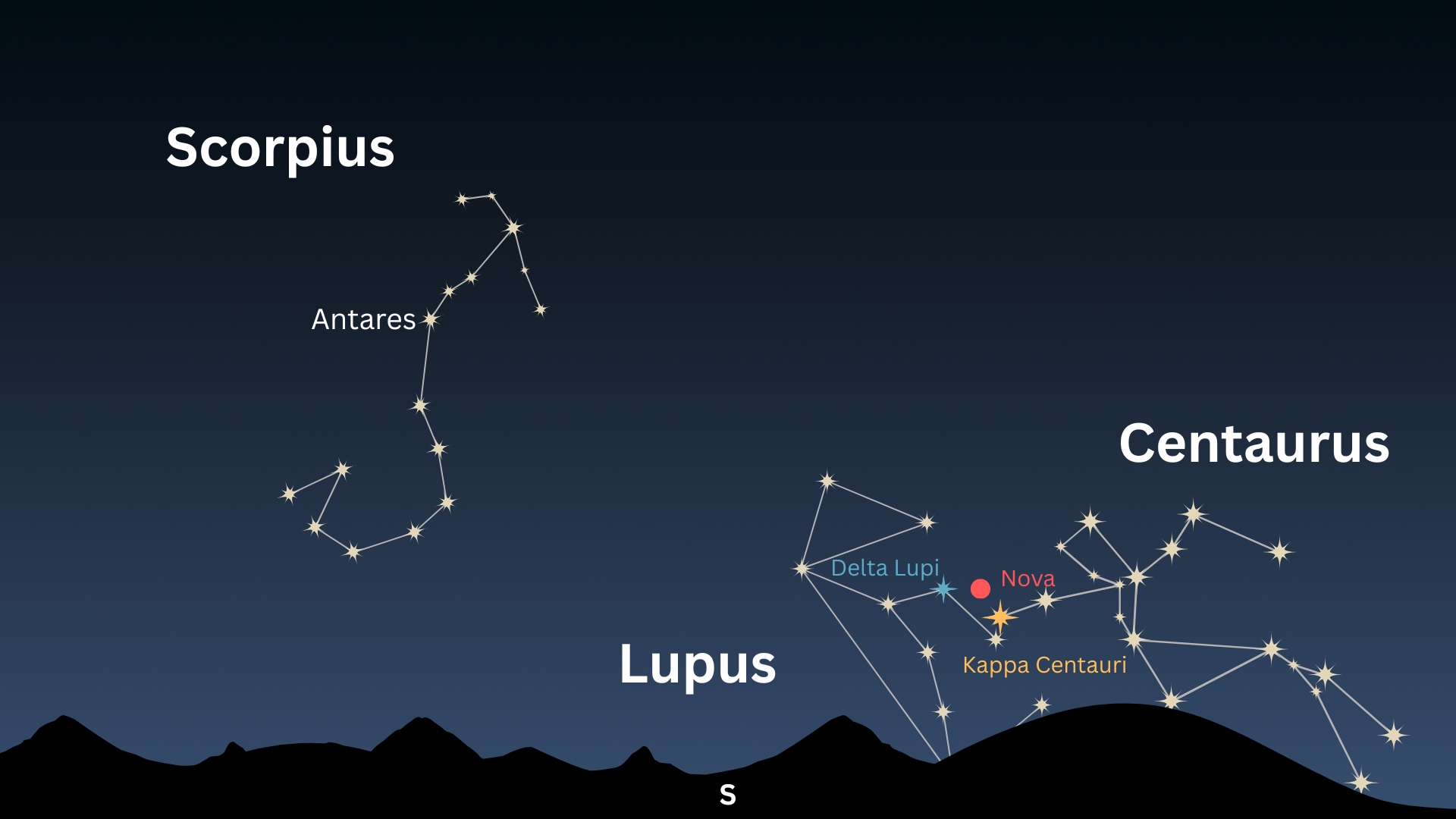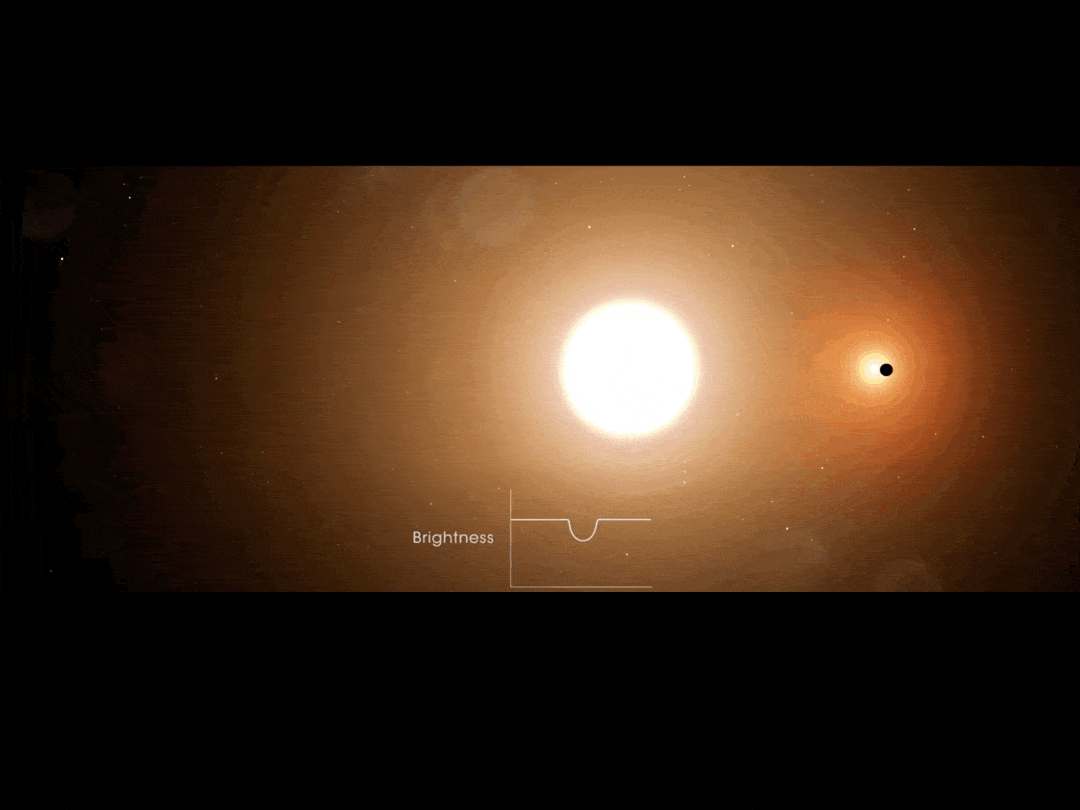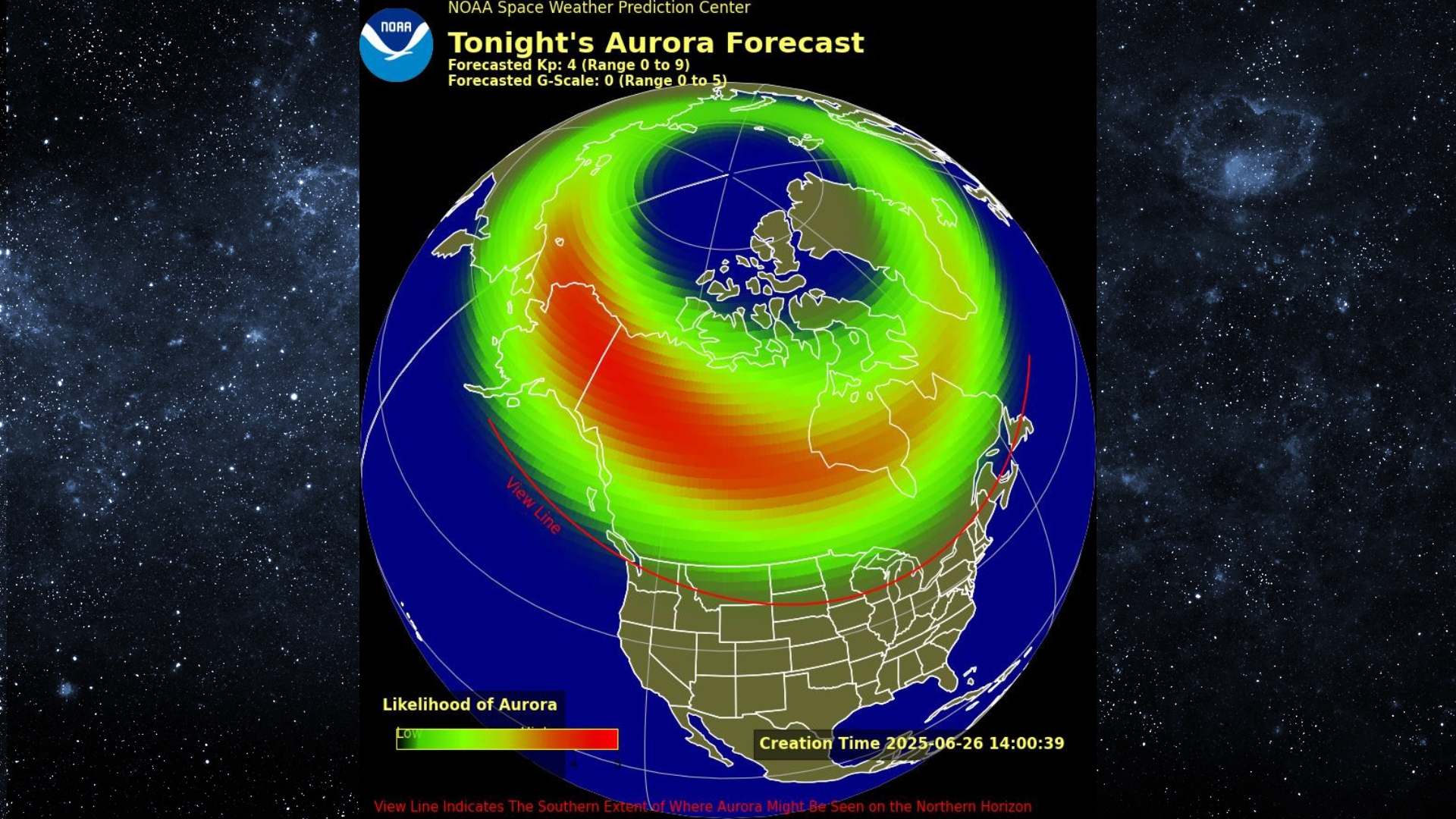Now Reading: A star exploded in the Lupus constellation. Here’s how to see the nova in the night sky this month
-
01
A star exploded in the Lupus constellation. Here’s how to see the nova in the night sky this month
A star exploded in the Lupus constellation. Here’s how to see the nova in the night sky this month

An ordinarily dim star is making a brilliant appearance in the night sky after unleashing a powerful nova explosion, which has rendered it visible to the naked eye.
The nova V462 Lupi was first discovered on June 12 by the Ohio State University-led All-Sky Automated Survey for Supernovae (ASAS-SN), as reported by Sky & Telescope. The star that spawned the nova is usually too dim to see with the naked eye, boasting an apparent brightness — or magnitude — of +22.3.
However, the explosion of radiation thrown out by the nova caused it to brighten dramatically, making it appear as if a new star is shining in the night sky!
Nova Lup 2025 (V462 Lupi) via @TelescopeLiveHQ (imaged on June 20, 2025. Unfiltered mag. about 5.5; animation with a POSS archive image via Tycho software )Obs. E. Guido; M. Rocchetto; A. Valvasori#astronomy #novaLup2025 #astronomia pic.twitter.com/ve4JpvO0U8June 22, 2025
Remember, the lower an object’s magnitude, the brighter it is in the night sky. For reference, the human eye is capable of seeing stars with a magnitude of +6.5 or greater under dark sky conditions.
A subsequent analysis of the star’s light fingerprint by astronomer Yusuke Tampo of the University of Cape Town, South Africa led to the event being classified as a classical nova. This form of stellar explosion occurs when the gravitational influence of a white dwarf star orbiting in a binary system strips mass from its nearby companion.
This process continues until the mass accumulated on the surface of the white dwarf is heated to the point that a cataclysmic fusion reaction becomes inevitable. The resulting explosion releases a colossal outpouring of radiation, which can be visible from Earth.
Soon after its discovery on July 14, observers associated with the American Association for Variable Stars (AAVSO) reported that V462 Lupi was visible through a pair of 15×70 binoculars with a magnitude of around +7.9.
Nova Lupi 2025 (= V462 Lupi) imaged at about 03:45 UTC on the 19th. Discovered a few days ago, it’s probably around maximum light now. I estimated its visual magnitude at around +5.4. Low in the sky from this latitude, but not hard to find with binoculars. pic.twitter.com/52FIaD9kRuJune 19, 2025
The nova was observed to steadily brighten in the days following its discovery, eventually becoming visible to the naked eye around the middle of June. It subsequently crescendoed, with some reports placing its brightness at over +5.5. Sadly, the AAVSO light curve of V462 Lupi based on member observations appears to show that the nova is now on the decline.
How to find the nova in the night sky

V462 Lupi will soon vanish from the night sky, but before it does, the dark skies around the new moon present a perfect time to head away from city lights to hunt down the ancient nova light. We would advise taking a pair of 10×50 binoculars, which will make it easier to spot the subsiding light of the nova while providing a wide field of view with which to observe the multitude of surrounding stars.
The nova can be found in the patch of sky close to the bright stars Delta Lupi and Kappa Centauri in the constellation of Lupus, the wolf. Its exact location is best found with the aid of a star chart, which, as noted by Sky & Telescope, can be generated on the AAVSO website by typing ‘V462 Lup’ into the ‘Pick a star’ box and clicking ‘Create a finder chart’.
V462 Lupi will be easiest to spot for skywatchers in the southern hemisphere, where the nova will be highest in the post-sunset sky. However, the patch of sky containing the nova will also be visible close to the southern horizon for U.S. stargazers living in states closest to the equator, such as Texas, Florida, and Louisiana.
Stay Informed With the Latest & Most Important News
Previous Post
Next Post
-
 012024 in Review: Highlights from NASA in Silicon Valley
012024 in Review: Highlights from NASA in Silicon Valley -
 02Panasonic Leica Summilux DG 15mm f/1.7 ASPH review
02Panasonic Leica Summilux DG 15mm f/1.7 ASPH review -
 03From Polymerization-Enabled Folding and Assembly to Chemical Evolution: Key Processes for Emergence of Functional Polymers in the Origin of Life
03From Polymerization-Enabled Folding and Assembly to Chemical Evolution: Key Processes for Emergence of Functional Polymers in the Origin of Life -
 04How New NASA, India Earth Satellite NISAR Will See Earth
04How New NASA, India Earth Satellite NISAR Will See Earth -
 05And Thus Begins A New Year For Life On Earth
05And Thus Begins A New Year For Life On Earth -
 06Astronomy Activation Ambassadors: A New Era
06Astronomy Activation Ambassadors: A New Era -
07SpaceX launch surge helps set new global launch record in 2024




















